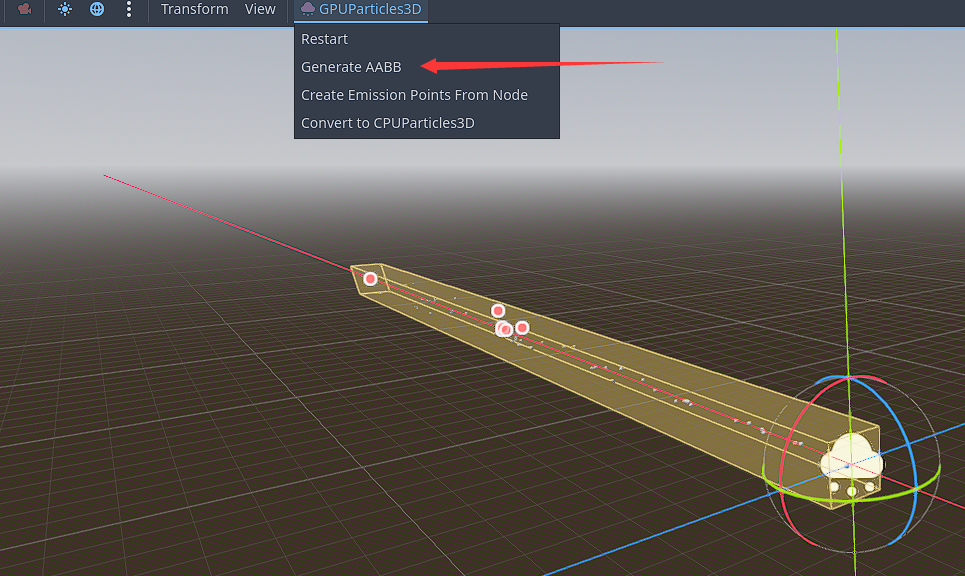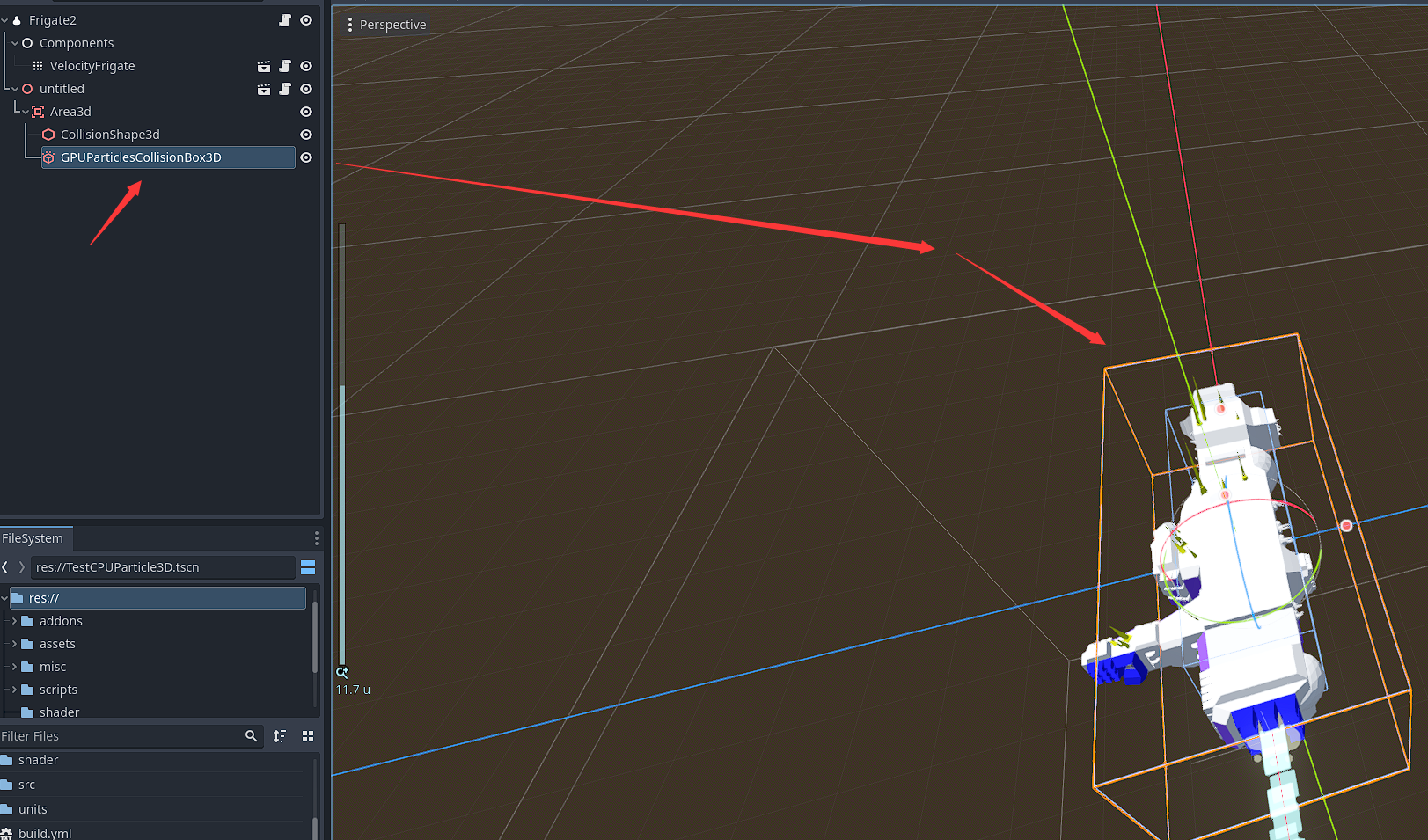I am building a generative terrain and environment and I have a few particle systems that I'm using to place foliage, largely inspired by devmar's tutorial here. The GPUParticles3D have worked well for grass, but I don't currently have any collisions working, making it more difficult to get working for trees or debris. From what I've seen, collisions are now possible for GPU particles in Godot 4, but I can't seem to find out how to enable them. Does anyone have any resources or advice that would put me in the right direction? The code that I am using for the foliage is based on the shader that devmar made available:
[gd_resource type="Shader" format=3 uid="uid://cmyeclhrvhn2o"]
[resource]
code = "shader_type particles;
uniform float instance_rows;
uniform float instance_rot_randomize = 2.5;
uniform float instance_spacing = 1.0;
uniform float instance_scale_x = 1.0;
uniform float instance_scale_y = 1.0;
uniform float instance_scale_z = 1.0;
uniform float instance_scale_randomize = 1.0;
uniform float instance_pos_randomize : hint_range(0.0, 50.0) = 2.0;
uniform float instance_scale_min = 0.2;
uniform float instance_scale_max = 1.2;
uniform float _coverage_altitude = 10.0;
uniform float _coverage_range = 100.0;
uniform float _slope_coverage = 0.5;
uniform float clumping_strength : hint_range(0.0, 100.0) = 20.0;
uniform mat3 terrain_normal_basis;
uniform sampler2D map_heightmap;
uniform sampler2D map_normalmap;
uniform bool instance_orient_to_normal = false;
uniform float instance_orientation_influence : hint_range(0.0, 10.0) = 1.0;
uniform float __terrain_amplitude;
uniform vec2 map_heightmap_size = vec2(2000.0, 2000.0);
uniform vec2 map_normalmap_size = vec2(2000.0, 2000.0);
uniform sampler2D map_clumpmap;
float get_height(vec2 pos) {
pos -= 0.5 * map_heightmap_size;
pos /= map_heightmap_size;
return 2.0*__terrain_amplitude * texture(map_heightmap, pos).r;
}
vec3 unpack_normalmap(vec3 rgb) {
vec3 n = rgb.xzy * 2.0 - vec3(1.0);
n.z *= -1.0;
return n;
}
vec3 get_normal(vec2 pos) {
pos -= 0.5 * map_normalmap_size;
pos /= map_normalmap_size;
return terrain_normal_basis * unpack_normalmap(texture(map_normalmap, pos).rgb);
}
float get_clumps(vec2 pos) {
pos -= 0.5 * map_heightmap_size;
pos /= map_heightmap_size;
return 100.0 * texture(map_clumpmap, pos).r;
}
void start() {
// get position
vec3 pos = vec3(0.0, 0.0, 0.0);
pos.z = float(INDEX);
pos.x = mod(pos.z, instance_rows);
pos.z = (pos.z - pos.x) / instance_rows;
// center the emitter
pos.x -= instance_rows * 0.5;
pos.z -= instance_rows * 0.5;
// apply instance spacing
pos *= instance_spacing;
// center on position of emitter
pos.x += EMISSION_TRANSFORM[3][0] - mod(EMISSION_TRANSFORM[3][0], instance_spacing);
pos.z += EMISSION_TRANSFORM[3][2] - mod(EMISSION_TRANSFORM[3][2], instance_spacing);
// add noise
vec3 noise = texture(map_heightmap, pos.xz * 0.1).rgb;
pos.x += noise.z * instance_spacing * instance_pos_randomize;
pos.z -= noise.x * instance_spacing * instance_pos_randomize;
// apply height
pos.y = get_height(pos.xz);
float y2 = get_height(pos.xz + vec2(1.0, 0.0));
float y3 = get_height(pos.xz + vec2(0.0, 1.0));
float y4 = get_clumps(pos.xz);
// hide parts from steep areas
if (abs(y2 - pos.y) > _slope_coverage) {
pos.y = -10000.0;
} else if (abs(y3 - pos.y) > _slope_coverage) {
pos.y = -10000.0;
}
if (abs(pos.y) < _coverage_altitude*5.0-_coverage_range) {
pos.y = -10000.0;
}
if (abs(pos.y) > _coverage_altitude*5.0+_coverage_range) {
pos.y = -10000.0;
}
// clumping
vec3 clumps = texture(map_clumpmap, pos.zx).rgb;
if (abs(y4) < clumping_strength) {
pos.y = -10000.0;
}
// rotate transform
vec3 tex_scale = vec3(1.0) ;
vec3 base_scale = vec3(mix(instance_scale_min, instance_scale_max, noise.x)*instance_scale_x,mix(instance_scale_min, instance_scale_max, noise.y)*instance_scale_y,mix(instance_scale_min, instance_scale_max, noise.z)*instance_scale_z );
base_scale *= base_scale*instance_scale_randomize;
base_scale = sign(base_scale) * max(abs(base_scale), 0.1);
// update transform
pos.x += cos( noise.x * instance_pos_randomize) * base_scale.x ;
pos.z += sin( noise.z * instance_pos_randomize) * base_scale.z ;
// re-transform to orient to normal if the setting is on
if (instance_orient_to_normal == true){
TRANSFORM[1].xyz = get_normal(pos.xz) * instance_orientation_influence;
TRANSFORM[2].xyz = sin(get_normal(pos.zx) * faceforward(vec3(1.0),TRANSFORM[1].xyz, vec3(0.0, 0.0, 1.0))) * instance_orientation_influence ;
TRANSFORM[0].xyz = sin(get_normal(pos.zx) * faceforward(vec3(1.0),TRANSFORM[1].xyz, vec3(1.0, 0.0, 0.0))) * instance_orientation_influence ;
}
else {
TRANSFORM[0].xyz = vec3(0.0);
TRANSFORM[1].xyz = vec3(0.0);
TRANSFORM[2].xyz = vec3(0.0);}
// finalize transform positioning and scaling including randomizations
TRANSFORM[3][0] = pos.x;
TRANSFORM[3][1] = pos.y;
TRANSFORM[3][2] = pos.z;
TRANSFORM[0][0] = cos(noise.x * instance_rot_randomize) * base_scale.x;
TRANSFORM[0][2] = -sin(noise.x * instance_rot_randomize) * base_scale.x;
TRANSFORM[2][0] = sin(noise.z * instance_rot_randomize) * base_scale.z;
TRANSFORM[2][2] = cos(noise.z * instance_rot_randomize) * base_scale.z;
TRANSFORM[0][0] = base_scale.x;
TRANSFORM[1][1] = base_scale.y;
TRANSFORM[2][2] = base_scale.z;
} "



